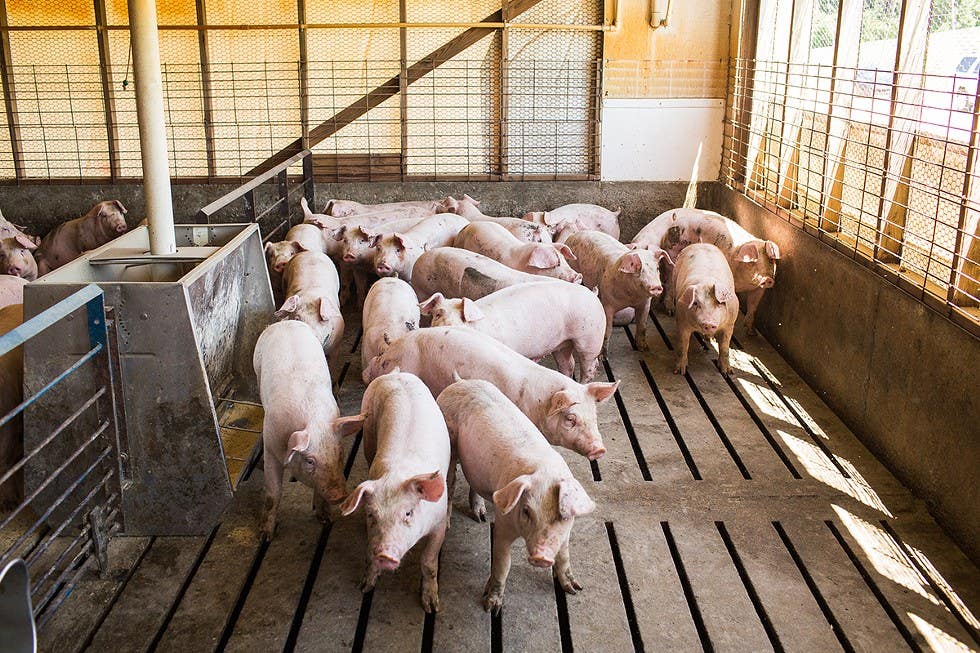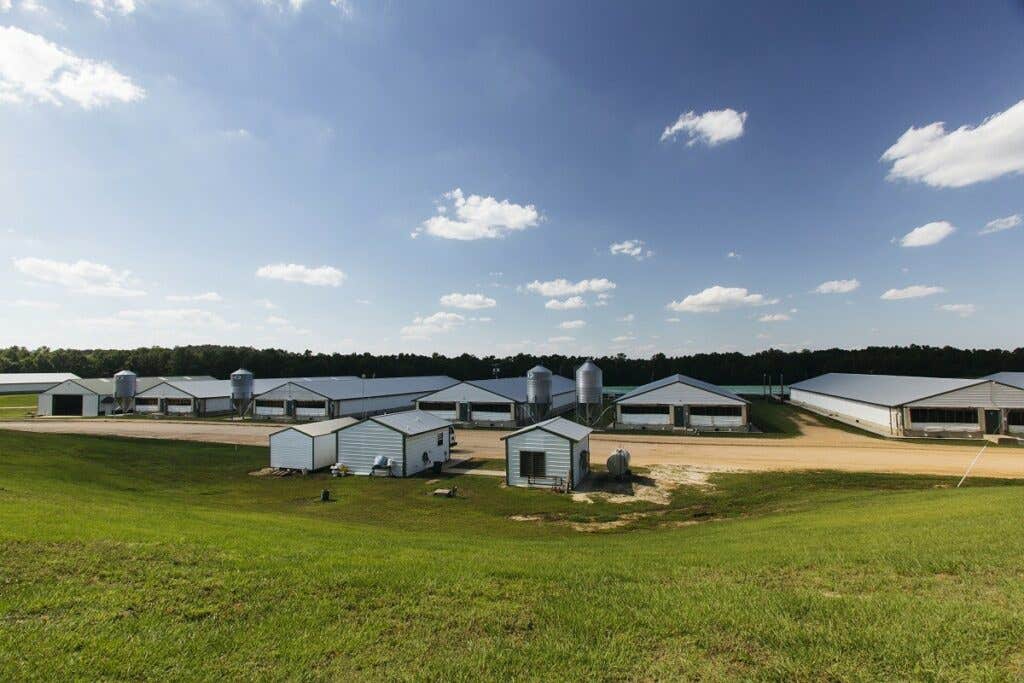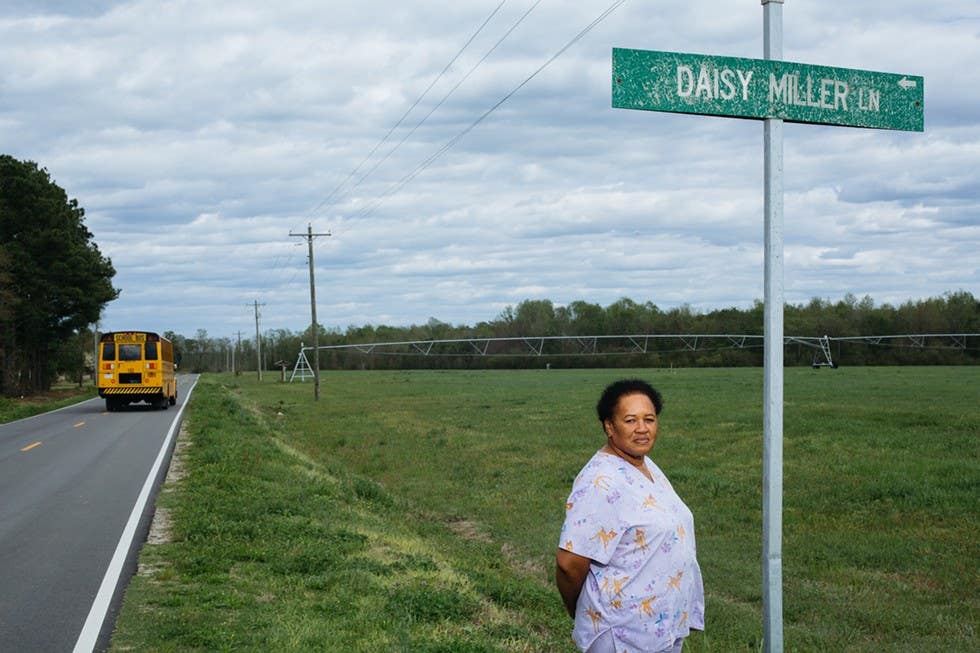
An In-Depth Investigation Into the Hog Industry’s Smelliest Practices
Go read the Indy Week’s telling new series on the politics and problems of North Carolina hog farming
What would you do if your neighbors started spraying a cocktail of pig waste and decomposing parts into your yard?
Hogwashed, a three-part series published at North Carolina's Indy Week, digs deep into this very real problem in the hog industry in North Carolina. Written by Ken Fine and Erica Hellerstein, the stories investigates the on-the-ground effects of farming practices on local North Carolinians, and how big a role politics plays in bringing about change to the industry.
The first piece in the series looks at the negative effects of pig farming practices on the farm's neighbors—in particular, the "lagoons," giant pools of pig waste that are liquified and sprayed in a fine mist into nearby fields. When this happens, it becomes impossible for people who live nearby to go outside. The stench is unbearable, and lawsuits against big hog farms show that some have reported health effects like headaches and asthma.
Most of the people affected are African-American, Hispanic, or Native American, displaying what the article refers to as environmental racism. The story quotes one former pig farmer, Don Webb, as saying, "These are human beings...They've worked their whole lives and are tryin' to have a clean home and a decent place to live, and they can't go on their front porch and take a deep breath." But the hog farming industry and some members of the North Carolina legislature are unwilling to further regulate these farms.

The second story digs into what happens when these same lagoons end up in local rivers and other bodies of water. After Hurricane Matthew hit North Carolina last fall, "According to the N.C. Pork Council, fourteen waste lagoons flooded. When those waters receded, they took the contents of those lagoons with them, clean-water advocates say. What didn't end up in the river soaked into the ground."
Because of the way lagoons are constructed, they have a particularly high likelihood of flooding, but North Carolina hog farmers don’t have to record information such as how old their lagoons are and how they were constructed, so it’s difficult to predict when they will flood. There are inspectors who are supposed “to ensure compliance with strict environmental regulations," including "lagoon integrity and liner conditions,” but these days inspections don’t involve much past paperwork provided by farmers.
The final part in the series lays out potential solutions to the problems posed by animal waste, starting with a look at Butler Farms, which uses technology that converts methane into energy. As the piece points out, "Solutions do exist, both for the odor issues and the potential environmental problems examined in the first two parts of this series. And the hog industry is aware of them. In 2000, the state attorney general entered into the so-called Smithfield Agreement, in which the industry agreed to fund a $17.1 million experiment to find more sustainable methods of disposing of hog waste. But experts at N.C. State say that, even a decade after the results of that research came to light, not much has happened."
Most of the technologies required to make the farms more environmentally friendly are not available for older farms—only new farms are able to implement these systems, and they can do so without the financial burden that can fall upon older farms.

Read an excerpt—reprinted with permission—from Part I below, then check out the full series over at Indy Week.
Part One: The Stench
I. "Nobody Else Will Ever Live on This Land"
Rene Miller pokes a lavender-frocked leg out of her front door and grimaces. It's a bright April afternoon, and the sixty-six-year-old Miller, with a stoic expression and a dark crop of curls, braces herself for the walk ahead.
Her destination isn't far away—just a half-mile down a narrow country road, flanked by sprawling green meadows, modest homes,and agricultural operations—but the journey takes a toll. Because as she ambles down the two-lane street, stepping over pebbles and sprouts of grass, the stench takes hold—an odor so noxious that it makes your eyes burn and your nose run. Miller likens it to "death" or "decomposition," to being surrounded by spoiled meat.
As bad as it is today, she says, it's nothing compared to the way it is on a muggy afternoon in August, when the stink hovering in the stagnant, humid air can nearly "knock you off your feet."
Still, Miller makes this trip often, to honor her family and pay her respects. She points ahead to her family cemetery, which sits just off Veachs Mill Road in Warsaw, an hour's drive east from Raleigh. It's a stone's throw from her one-story, white-walled house, part of a tract of land her great-grandmother inherited as part of a post-slavery land grant. When she gets to the cemetery, she stops in front of her nephew's grave, recalling his life and his death to cancer. Purple and yellow wildflowers nip at its edges; nearby, a Steelers flag rustles in the wind.
"How long have we lived here? Always," she says, gazing at her grandmother's headstone. "And we always will. Nobody else will ever live on this land."
The odor isn't just her problem. It's ubiquitous across parts of eastern North Carolina. It's the smell of hog country, of millions of pigs and even more tons of their feces. For years, their waste and its stink have been the subject of litigation, investigations, legislation, and regulation. A growing body of research has documented the industry's health and environmental risks. The issue has been well examined in the media, too. The New York Times and The Washington Post covered it. So have Dateline and 60 Minutes. The News & Observer earned a Pulitzer Prize for reporting on it in 1995.
Nonetheless, the stench—and its consequences, both for the lower-income, largely African-American neighbors of the hog farms and the state's environment—lingers. The obvious question—why?—has been at the heart of a months-long INDY investigation that has led reporters to raucous legislative hearings, a tiny airplane, and stories about death threats shared over a glass of sweet tea. This series will explore what the newspaper has learned—and what can be done to solve North Carolina's pervasive hog-waste problem.
Keep Reading
Continue to Next Story










